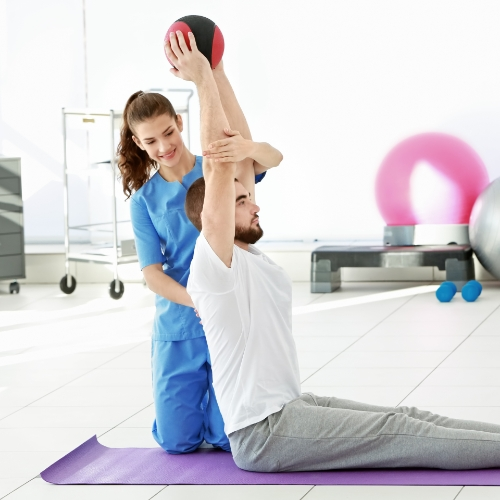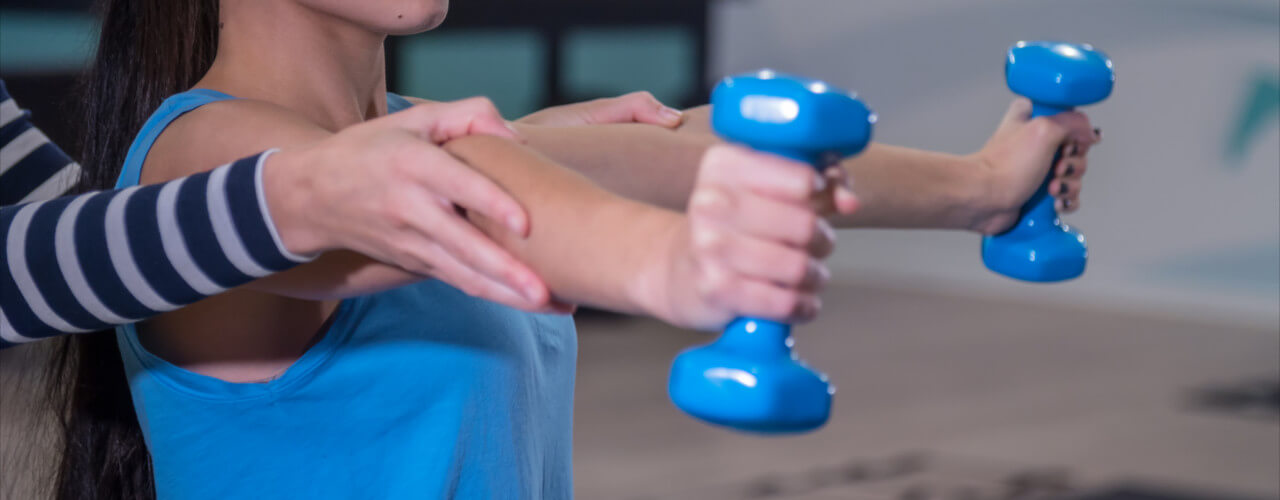
One would think all exercise would be therapeutic but this is far from the truth. An exercise becomes progressively more therapeutic when it is specifically designed to address a person’s unique deficit.
Just going into the gym and running through the machines is exercise but how therapeutic it is would depend on your pain, problem, and underlying muscle imbalances. It is not uncommon for someone to make themselves worse as a result of doing exercises that enhance the weak and tight muscle patterns in the body. The younger we are the more we can get away with this, the older we get the more exercise should target specific deficits to correct the imbalances that develop as we get older.
Ultimately having a program customized to help you overcome your unique imbalances and deficits, the more you achieve your goals and will achieve them in a shorter amount of time. Fortunately, Full Potential Physical Therapy in Holland, MI can assist you. Much would depend on an evaluation to know what your unique needs are and not advising by just making assumptions.
Therapeutic exercise falls into basic categories of Intervention
Stretching
This is the process of lengthening muscle and its related tissues to obtain better motion, mechanical efficiency, muscle flexibility, muscle recovery, and better circulation. It is a mainstay in the rehabilitation process, in sports, or in industrial prevention programs. It is everywhere people want to keep moving.
At times we forget muscle creates motion by shortening and so over time we tend, as human bodies, to develop progressively shortened muscle tissues and a loss of motion. Under these conditions, joint stress will increase as pressure develops prematurely causing friction and eventual cartilage breakdown. Stretching is key in sustaining joint health and there is a science behind doing it properly. Learning how to do it correctly and what to focus on is highly dependent on knowing your deficits and goals.
Strengthening
Life is lived through overcoming gravity as we move from point A to B. Strength is our ability to handle gravity easily. Surprisingly, as we go through time, some of our muscles are being heavily challenged by gravity and our lifestyle and so build more strength, and other muscles are being neglected. Some sports have this effect on our muscle system too. As a result, these imbalances can have negative effects on not only our joints but eventually cause pain and frustration.
Strength deficits often lead to chronically tight muscle groups as they compensate for weakness, adding more stress to joints and related tissues. Arthritis is partially the product of poor joint protection over time and poor protection relates to muscle weakness and tightness combinations that put more friction on the joint’s cartilage.
A strengthening program designed for your deficits and your goals is key to a future where you can have more control over the quality of your life. In total, one needs a strategy to remain efficient as the decades add up which would incorporate.
Functional Training
Therapeutic exercise, manual therapy , NMR and functional training form the four core treatment interventions in a patient’s rehab. As one ages, it becomes more clear a person needs a strategy for sustaining the body’s ability to perform. Performance or functional activity is heavily dependent on muscle doing its job well and the core four play a big part in keeping the musculoskeletal system working as a coordinated team. Tight/weak patterns in the body which form neuromotor and joint imbalances cause a reduction in performance. One may attribute this to age but an equally important reason is muscle imbalances which are correctable if you are motivated to work at correcting them.
The great thing about muscle and our nervous system is it is changeable. Muscles can lengthen, they can strengthen and coordination between muscles and joints can be improved, there is notable potential no matter the age. Ultimately, as one goes through the rehab process, the program is guided toward functional activities and what the patient wants to be able to return to doing. Full Potential therapists have proven strategies to put you back in charge of your body and your life.
For more information, contact us at our Holland, MI location.
A Better Life is Only Four Steps Away
Physical therapy can be an unfamiliar experience for many. To orient new patients to the process, we have divided their rehab journey into four segments called “The Four Phases of Getting Better.” It is important to note that while there are four phases utilized over the course of your care, they are not totally separate. They move gradually toward greater strengthening and function, which is the end goal to return confidently to the life you desire to live.1
Pain Relief
The first focus in getting better is pain relief. After your evaluation, your physical therapist will use hands-on techniques or manual therapy, light therapeutic exercise, and education on how to modify your activity and posture in order to give you more control over your pain. In this stage, modalities like ice, heat, myofascial release, electric stimulation and kinesiotape may be used.
2
Improve Mobility/Flexibility
The second step in this method is to improve mobility and flexibility. Your therapist will design a progressive program of range of motion and light stretching to restore mobility and reduce pain.
3
Improve Strength/Control
In the third step of this method, muscle weakness will be addressed to help you maintain the gains and momentum you achieve through phases one and two. A thorough strengthening process is the step that gives results that last, and this will prepare you for more functional training – the final step.
4
Functional Training
Now that your pain is resolved and you have the necessary mobility and strength, your program can be advanced into functional training. Whether you are returning to work, returning to life after post-op rehabilitation, getting back into recreation or sports, or simply returning to the activities of daily life, this step helps ensure your success after graduation and empowers you to be confident in your abilities again.

Reach Your Full Potential & Live Pain-Free!
Book A Free Consultation
Book a Free Consultation Today to Find Out How Physical Therapy Can Help You Find Relief!
request an appointment
Reach Your Full Potential and Live Life Pain-Free! Request an Appointment to Get Started Today!





